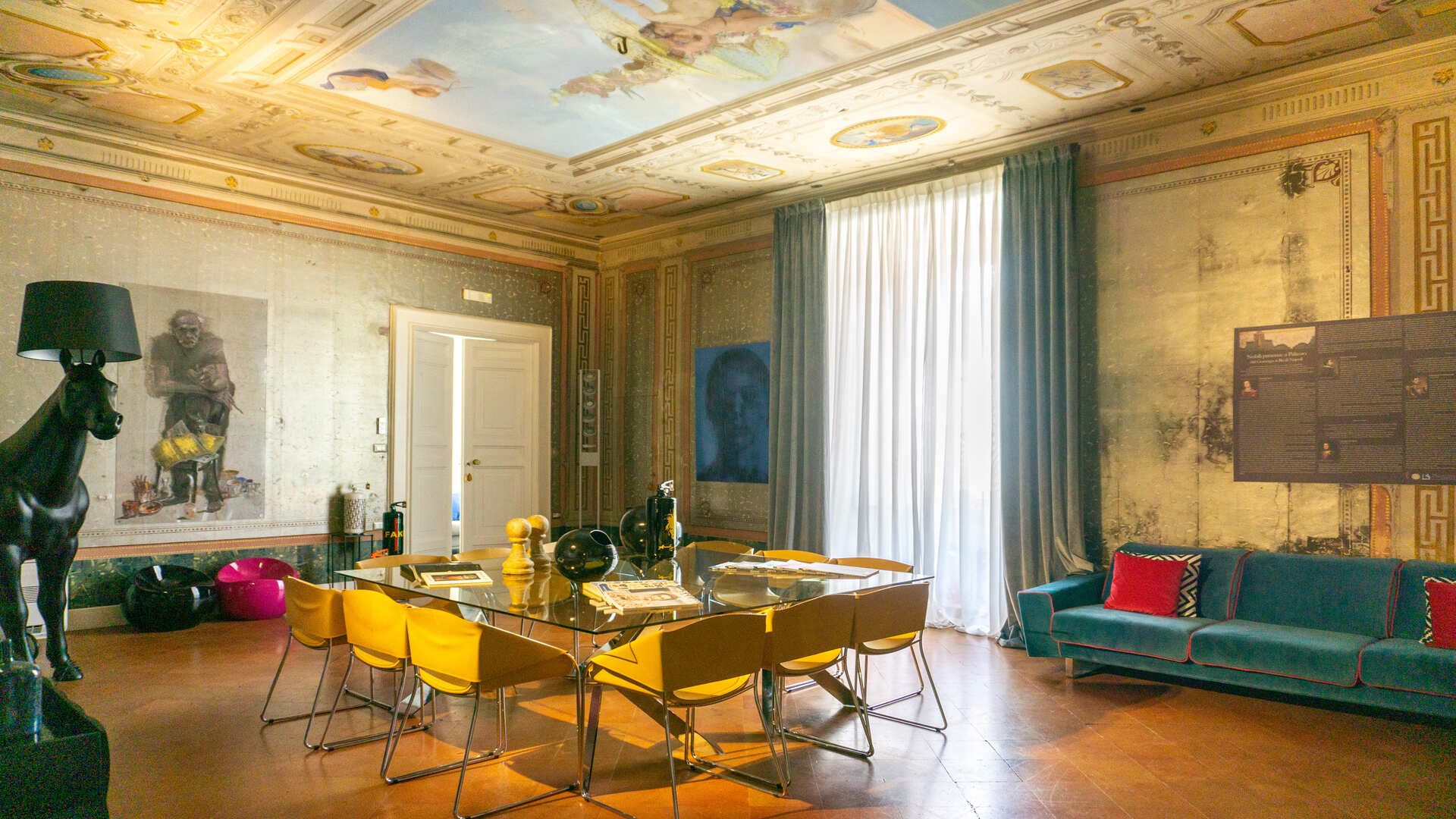The actual building is of the end of the XVIII century, it was built demolishing the preceding factory going back to the XVI century. Michelangelo, exponent of the illustrious family Salottolo, bought the palace in 1782 for 1800 ducals and proceeding contextually to its total restructuring that made to lose to the structure its original characteristics. The original plant of the Palace, in fact, was probably realized between 1500 and 1530 (date of the marriage between Isabella di Capua, princess of Molfetta and Ferrante I Gonzaga, count of Guastalla from 1539 and viceroy of Sicily in 1535 remembered by the noble coat of arms found inside the Palace).
After the Gonzaga the stable passed to the Neapolitan noble Ottavio Vitaliano, later belonged to the family of Carafa, dukes of Jelsi and feudal lords of Campobasso. In 1727 at the death of Mario, not having these heirs, passed to the Demanisti of Campobasso who bought back the feud nominating Baron Salvatore Romano, a local farmer. The structure was sold from these last ones in 1783 to Michelangelo exponent of the influential family of the Salottolo that held in property the last portion of the building until the end of the XIX century. The palace was purchased by the family Cannavina, whose name has remained to the building. In 2011 the furnishings and the palace were put up for sale by the heirs.
The palace has a quadrangular shape develops on a ground floor and two upper floors, in typical classical style. It has an imposing baroque portal, with above a coat of arms formed by a pine tree with two lionson three hills. The coat of arms is surmounted by a marquis crown. It is part of the building also a private chapel in each noble floor.

